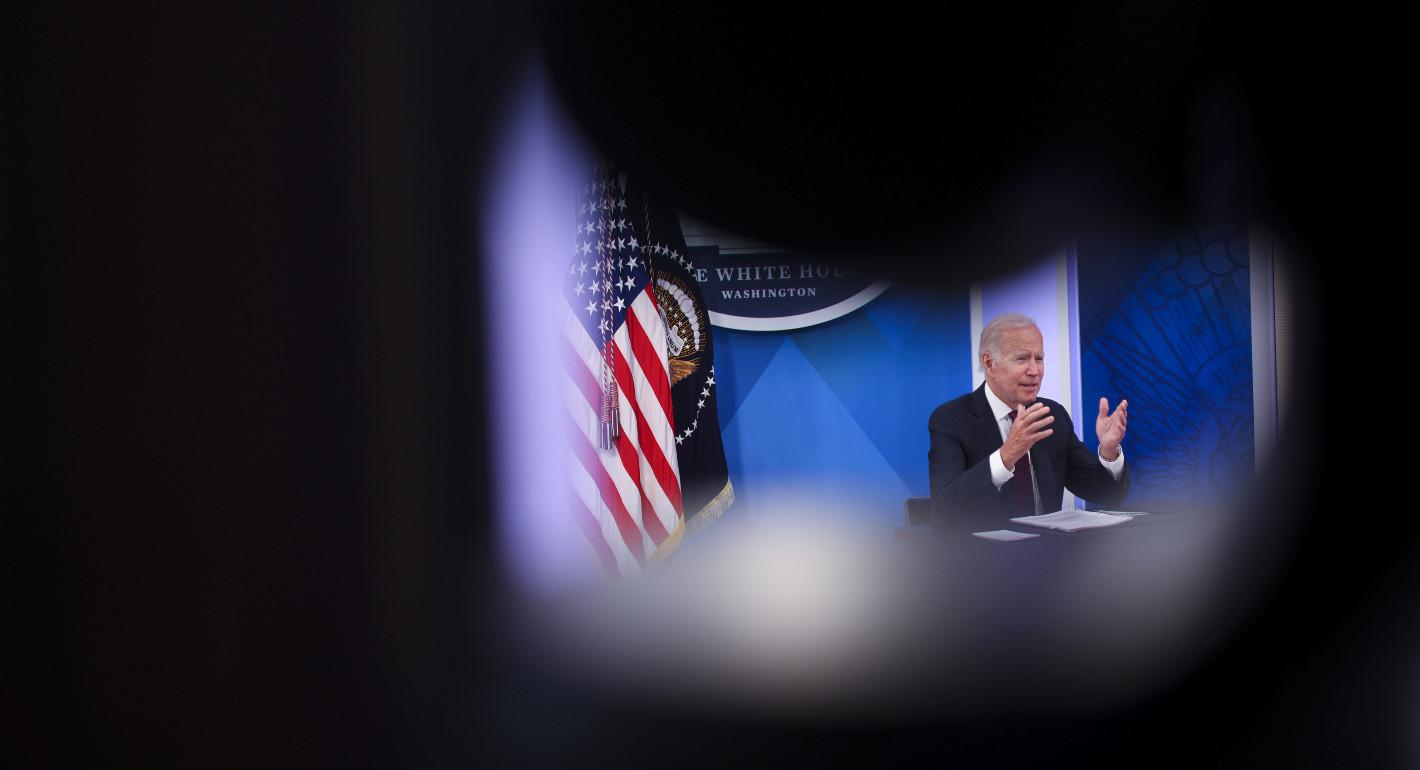Bureaucrats sometimes joke that strategy writing in the government is like ornamenting a Christmas tree—everyone gets a chance to add their favorite issue and, in the process, the strategy gets lost.
The White House released a national security strategy on Wednesday with the usual laundry list of challenges: food security, terrorism, arms control, pandemics, climate, cyberspace, technology, corruption, and plans for every region of the world. It is, in this sense, a well-decorated tree.
But it still signals some important shifts in policy.
The main thrust of the strategy is that America will focus on competing with China and containing Russia, and it will do so by investing at home, building a coalition of like-minded states, and modernizing its military. These are sensible priorities, but they’re also not surprising given Russia’s attack on Ukraine, which delayed the strategy for months, and America’s rising tensions with China, which date from well before Joe Biden became president.
What is more interesting in the new strategy is the way in which the White House has shifted its framing of the major fault lines of world order. Early in his administration, Biden placed America at the center of an urgent struggle between the world’s autocracies and its democracies. This framing responded to the deep concerns that many Democrats shared about the threat to America’s own democratic institutions, especially on the heels of the January 6, 2021, insurrection on Capitol Hill and former president Donald Trump’s refusal to acknowledge the outcome of the 2020 election.
But, as a roadmap for American statecraft, this ideological framing created problems. For one, casting the world historical moment as a fight with democracy in one corner and autocracy in the other amounted to a big oversimplification of the nature and variety of the world’s many different political systems. It also echoed the unfortunate good-versus-evil tone of former president George W. Bush’s controversial 2002 national security strategy.
Internationally, this stark ideological framing heightened tensions with China and Russia for no gain, while alienating nondemocratic nations that otherwise might be inclined to support Washington in tackling the challenges Beijing and Moscow pose. It risked placing the locus of America’s democratic problems overseas, rather than at home where it belonged.
The new strategy keeps the democracy-versus-autocracy framing but tries for a more open approach. For one, it says the United States doesn’t believe it needs to turn autocracies into democracies in order to be secure. More important, rather than a global competition between all autocracies and all democracies, the White House now explicitly welcomes autocracies that reject using force to change borders into the tent.
It is a struggle to square the circle between ideology and reality on these points, and the result is a somewhat awkward fudge that almost sounds as if the president and some of his advisers disagree about whether the democracy-autocracy competition is really so central. But short of an overall reframing of the president’s foreign policy, which would have been highly unlikely, this shift is a step toward solving the basic problem of how nations with different historical, cultural, and ideological outlooks can coexist in the twenty-first century.
The second big departure is about priorities. If the focus on Russia and China is unsurprising, the reduced emphasis on the Middle East is surprising—and a choice apt to make waves within the government and outside it.
A diminishing terrorism threat, American energy independence, a global effort to shift away from fossil fuels, and an end to the era of American nation-building all augur in favor of a strategic shift. But it’s risky politically and must have been hard, given how many experts in Washington—in and out of the government—still believe that what happens in the Middle East is vital to American security and prosperity. This view gains adherents in the face of rising prices at the pump, and it’s probably why specific changes—for example, to U.S. force posture in the region—are not included in the strategy.
A final shift has been in the making since the Trump administration. To compete with China, the White House rightly argues, America should invest in its strengths. The plan is to do this through a more active industrial policy that targets investment in infrastructure, education, training, cybersecurity, and green energy, among other fronts.
Individually, these initiatives are probably merited, but the sum of the parts amounts to a big vote in favor of a more active state role in American economic life. The shift is especially striking given the absence of a strong statement in favor of free trade and an enduring U.S. commitment to a free-market international economy (though the White House acknowledges its importance). The strategy’s emphasis on industrial policy, especially when coupled with growing restrictions on technology-sharing, represents a distinct shift away from America’s long-standing role as the world’s leading proponent of a global free-market economy—a role that nearly all previous national security strategies highlighted.
Perhaps this shift, like the attempt to de-emphasize the Middle East, will come to be viewed as a sign of the times.
It’s not a perfect strategy, and one might hope for a more forward-leaning approach in other areas such as burden-sharing, global challenges like climate change, a clear vision for peaceful coexistence with China, and perhaps even a return to framing foreign policy around the middle class—a framing that imposed much-needed discipline on some of the enthusiasms of America’s foreign policy intelligentsia. But as far as such strategies go, there is more to it than a little bit of everything. The White House has pointed in some new directions. It’s important not to miss these among the ornaments on the tree.





